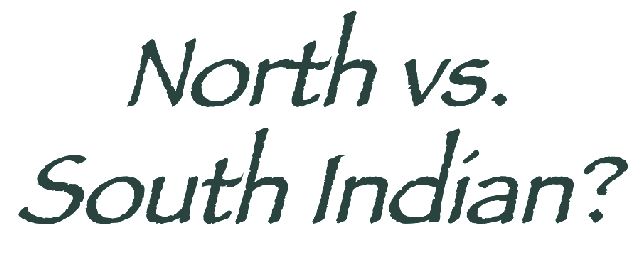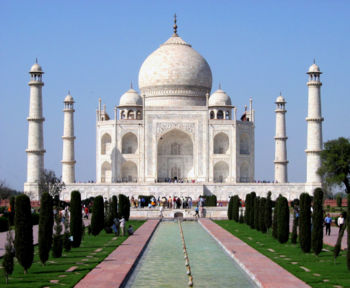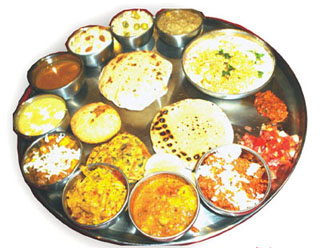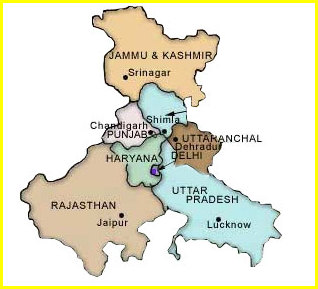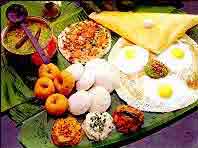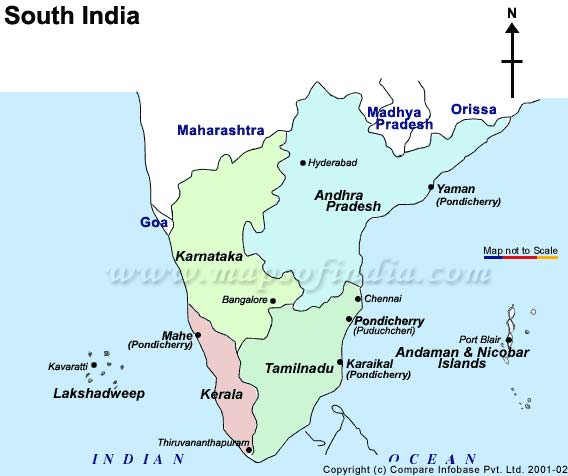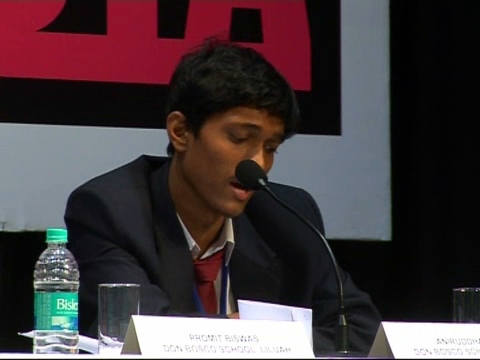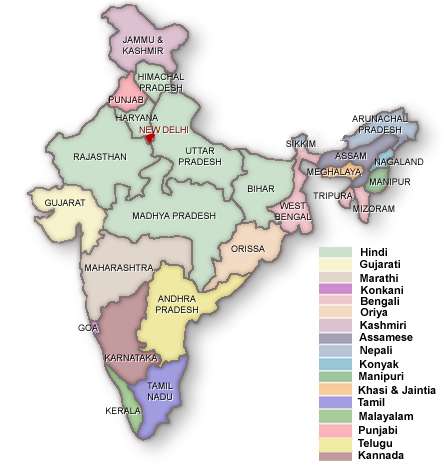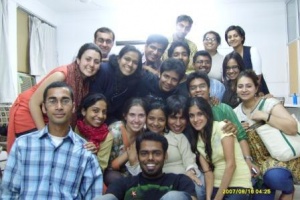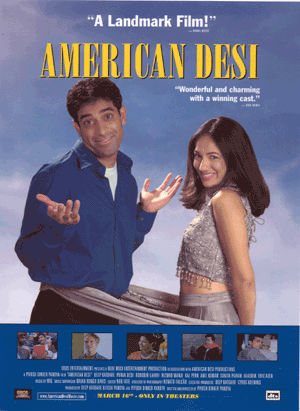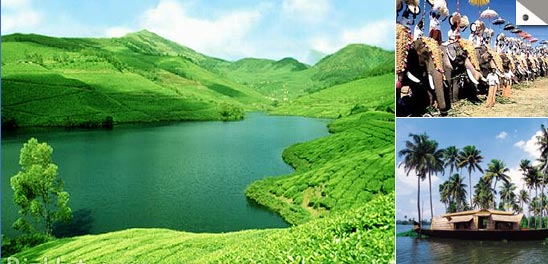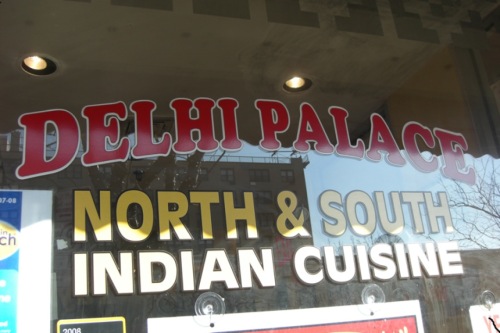From The Peopling of New York City
'Jackson Heights, like many other ethnic neighborhoods in New York City, contains a large Indian immigrant population. Although Jackson Heights is not as vast as the nation of India, its Indian immigrants indeed come from all over the nation. As a much smaller population within a mix of hundreds of different immigrants, nationalities, and cultures in NYC, however, the differences between North and South Indians begin to seem less significant.This research attempts to analyze relationships among different Indian immigrants, and understand how the diversity of the home regions which they came from affect their life here in New York.
Some key questions being asked are,
Do Indian Americans maintain a separate identity between those of North and South?
Do they remain separate from each other with their own traditions and rituals, or do they come together to create a joint Indian identity?
Is a new North and South Indian mixed culture developing here in NY as a result of this mix?
It is interesting to examine the different perspectives that exist on this subject from various Indian immigrants living in NYC.
Northern and Southern Regional Differences
We can begin by first understanding some of the aspects that differentiate North and South India:
When assessing the relationship between North and South Indians, it is crucial to understand what is even meant by the terms “South” or “North,” and what are some of the main differences between these regions.
What is usually referred to as “North India” are the states of Delhi, Jammu and Kashmir, Himachal Pradesh, Punjab, Uttaranchal, and Haryana. Many cities in the North such as the capital, New Delhi, have become very developed and metropolitan. It’s languages are largely Indo-Aryan due to the Aryan influence in its history, of which the main spoken language, Hindi, has developed from. However, other influences have led to a wide range of dialects and other languages spoken in the region. ("North India Online," 2008) North Indian food typically includes the breads chapattis, rotis, or paranthas, many vegetables and meats, and several curries, curd, and a wide variety of sauces. Most desserts are milk or rice based and soaked in syrup. ("Asian Info," 2000)
The region of "South India" usually includes the states of Kerala, Karnataka, Andhra Pradesh, and Tamil Nadu. It consists of many different languages that are mostly forms of Dravidian, and these states were even originally divided based on their different languages which include Tamil, Malayalam, Kannada, and Telegu. ("Indianetzone Encyclopedia," 2008) The culture of Southern India has several differences from that of North India in both traditions and beliefs. The food in the South also has several differences from most Northern cuisines. It mostly consists of rice, curried vegetables, which are often roasted or steamed. The sosa, idli, and vada which are rice pancakes are very typical, and coconut is one of the pain ingredients in a large portion of foods. Though there are many different cuisines in the South, most meals are vegetarian and not as meat based as in the North. ("Food-India," 2003) Though previously not as urban as the North, today many regions are strongly developing and changing.
Of course the state of India is vast, and it consists of thousands of peoples with their own appearance, dialect, food, religions, and culture. But despite all these differences, Indians have countless cultural aspects that unite them as one people.
Now that we have assessed some of the differences, the question really becomes how much these differences come to play when immigrants from all over India come to settle together in a much larger cultural diversity of NYC.
North vs. South: A national debate
Before we can look at South North Indian relations in New York, we must try to understand where the divide comes from in India itself:
In every country, and within any culture, clashes and differences between people tend to lead to tensions, prejudices, and stereotypes. We can see that there are countless differences that distinguish Northern and Southern culture, but what is the main cause of the divide between these two related peoples?
Of course there is a myriad of reasons, but for many the main problem seems to spur from the language difference. When Reema Prakash was asked what she thought the main reason for this divide was, she didn’t hesitate and immideately answered: “It comes down to the Language I think-you speak Hindi usually in the North, and you don’t really speak Hindi in the South. “
Additionally, Adithya, a graduate student of Computer Science living in the United States wrote that “The fact that one community cannot understand the others language leads to baseless assumptions, ridicule and fantasies.” Since the Southern states do not speak Hindi, they become somewhat disconnected from the Northern community, and are often looked upon by them as backwards. (Adithya, 2008)
Reema also supports this idea where she mentions that “North Indians say sometimes that south Indians are inferior because Hindi is national language which is spoken in the north, so south Indians don’t speak it or speak it as well. […] No one really treats me differently because I speak good Hindi.”
Spurring from the Hindi language divide and the increasing Western influence on the North, the South also becomes somewhat removed from the popular culture of the North. This popular culture is evident in Jackson Heights as most stores sell North Indian clothing and artifacts. Southerners often see this as materialistic and emphasizing show and splendor. Bollywood is an example of this, as it reflects almost entirely North Indian culture. Reema Prakash mentioned how Bollywood mocks South Indians often and “shows stereotype of the southern wife as very conservative and more village simpleton type of thing since it isn’t as developed as North.” (Interview with Reema Prakash)
As they are often better English Speakers and more involved in fields such as engineering and entrepreneurship, Southerners tend to see themselves as more concerned with education than their Northern neighbors. Adithya writes that Southerners feel as if they are “leap years ahead when it comes to the topic of gray matter and achievements in education and personal lives.” (Adithya, 2008)
So what remains of this divide here in Jackson Heights? Again, the main point comes back to the language. It seems natural that people will associate and befriend people who share the same home language as them. Reema mentioned how her “mom likes people who speak Malayalam so they can understand each other more.” In this coming together of Northern and Southern communities in Queens, the differences in popular culture and traditions become less distinct. A lot of the merchandise does come from North India, but both Northerners and Southerners shop in these centers. When younger generations attend American schools and begin to speak English with each other, the language gap starts to diminish as well.
We can therefore see that though Northern and Southern families in New York City indeed remain loyal to their home regions, the differences between these peoples are not as significant as they might have seemed back at home.
A new American Indian Youth Identity
We can then look at how the North/South divide is affected by the new generations of Indian immigrants in New York City:
The North vs. South divide is a hot topic of debate both in India and among Indian immigrants in the United States. To some, the divide is more significant, and to others it has absolutely no meaning.
Adthya states in his article that this divide “may be a thing of the past” since today people “move around, live in other states and countries, together with different communities of India” and this divide slowly begins to fade away." (Adithya, 2008) This is very true to the neighborhood of Jackson Heights.
The families that live in Jackson heights come from all over the state of India. And when observing an ethnic group, it is difficult to make generalizations as every individual and family is different. Most of the time, languages and traditions are maintained within the home of Indian immigrants. But as the second generation of immigrants emerges, a few things begin to occur:
As the second generation grows up in New York City, the youth become much more removed from the lifestyle in India as they never had a chance to experience it fully themselves. Therefore, the traditional lifestyle becomes less strict and conserved, and some practices that might have been crucial in India, now become simple traditions. The cultural differences that divide North and South then become less clearly defined and important. Often Indian Youth even begin to identify themselves more as South Asian than Indian, which can be read about more in the “youth” page.
As a first generation immigrant, Reema recognizes how much less attached the second generation is to their regional culture: “1st generation is very aware of differences [between North and South] but the 2nd generation, which are kids that are born here don’t have ties to culture as much, and just see it as Indian culture even though they do know the differences.”(Interview with Reema Prakash)
Furthermore, as second generation youth attend American schools, some aspects of American culture begin to integrate into the Indian culture that they grew up on. As English becomes the youth’s primary language, their traditional languages become less significant and the language divide between North and South begins to diminish as well. Kanushree Jain, who moved to Queens when she was two years old, admits that she herself has greatly assimilated to American culture, and is often called an “ABCD” or an “American Born Confused Desi” by her sister. She says that after growing up here, “I don’t see Indians as different if they are from a different region, to me you’re just Indian.” (Krawczyk Interview with Kanushree Jain)
Most youth do identify themselves as Indian, and the strength of their tie to their specific home region of India can be either very important to them, or not at all. But when pooled in a mix of cultures of Jackson Heights, a microcosm of the cultural diversity of New York City, what unites people is what they share, and not what differentiates them. The shopping center at Jackson Heights sells merchandise and food from certain places in India, and not necessarily from every immigrant’s home town. Indians must therefore conform to what’s available to them, and must often become less particular about where their possessions come from. For the same reason, Indians expand on their limits on whom they befriend, and begin to distinguish less between those from North and South.
Of course people will always relate further to people who are from the same home town as them; they will always have more of a common history and lifestyle. But as Reema said in her interview, “my parents always told met to be a good Indian girl—a good Indian girl, and not a good South Indian”
This divide becomes seemingly less and less important in our rising Indian American community in the United States.
Most of the Research on this page is based on two Main Interviews
Krawczyk Interview with Kanushree Jain
Kanushree is a Hunter College freshman whose family is from North India. Growing up in Flushing, Queens, Kanushree very much sees herself as a second generation American Indian.
Interview with Reema Prakash
Reema is a Hunter College freshman whose family is originally from South India. After moving here with her family a few years ago, Reema sees herself as a first generation Indian immigrant.
Citations
Adithya. (2008, June 25). The North South Divide in India: Language, Culture, Prejudice?. Retrieved May 12, 2009, from desicritics.org/2008/06/25/002324.php
All Indian Languages. (n.d.). Retrieved May 12, 2009, from http://www.nammavideo.com/
American Desi - The Movie. (n.d.). Retrieved May 12, 2009, from http://www.filmiyana.com/americandesi/
Camvol placements. (n.d.). Retrieved May 11, 2009, from http://www.camvol.org/9.html
Climate Change. (n.d.). Retrieved May 12, 2009, from http://www.whatswiththeclimate.org/
Food in India. (n.d.). Retrieved May 12, 2009, from www.asianinfo.org/asianinfo/india/food.htm#NORTH%20INDIAN%)
Indian Students Debate What Matters. SPIKE.COM:Indian students debate what matters. (n.d.). Retrieved May 12, 2009, from http://www.spike.com/video/indian-students/3153552
Languages of South India. (2009, February 12). Retrieved May 12, 2009, from http://www.indianetzone.com/21/languages_south_india.htm
North India . (n.d.). Retrieved May 12, 2009, from http://www.north-india.in/
SOUTH INDIA TRAVEL & TOURISM . (n.d.). Retrieved May 12, 2009, from http://www.travelmadeeasy.in/southindia.htm
South Indian Cuisine . (n.d.). Retrieved May 11, 2009, from http://www.indianfoodforever.com/food-guide/south-indian-cuisine.html
South Indian Food. (n.d.). Retrieved May 12, 2009, from http://www.food-india.com/region/southIndian.htm
The Great North India Tour. (n.d.). Retrieved May 11, 2009, from http://www.sayangholidays.com/package.php?uid=67&name=The+Great+North+India+Tour
Travel World-South India. (n.d.). Retrieved May 11, 2009, from http://www.9marksinn.com/Travel.html
Welcome To Shri Thal - Fine Indian Thali House . (n.d.). Retrieved May 11, 2009, from http://www.shrithal.com/
This page was put together by Noa Krawczyk.
